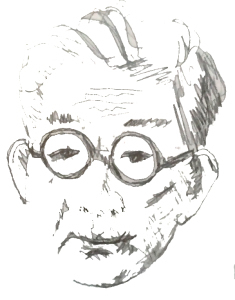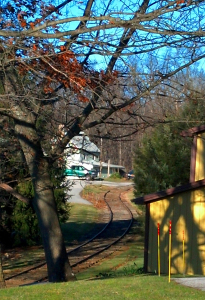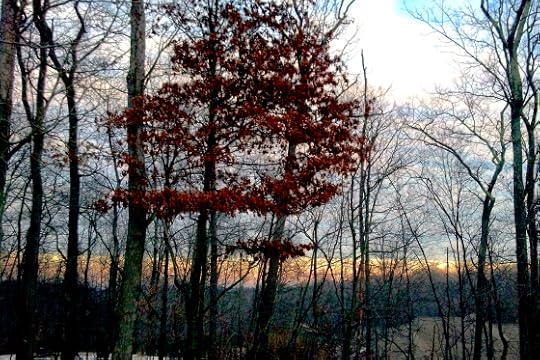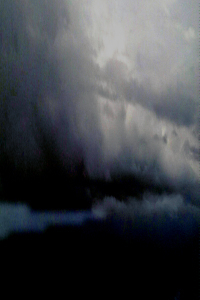Kurt Brindley's Blog, page 112
January 20, 2015
Meditation on a Title and an Introductory Poem as found in “Nature” by Ralph Waldo Emerson
A subtle chain of countless rings
The next unto the farthest brings;
The eye reads omens where it goes;
And speaks all languages of the rose;
And, striving to be man, the worm
Mounts through all the spires of form
Too often I’ll show little regard to introductions and read through them with hardly reading them at all, my eyes skimming dismissively over the words in an effort to get to “the true essence” of the work. However, as I have resolved to not just read, but to read deeply the work of Ralph Waldo Emerson, I have to remember, then, that care needs to be given to each of the words that Emerson had specifically chosen to pen, as he had entrusted each chosen word to convey its part of a broader message that he had, himself, intended to convey. So it is with care and attention that I proceed.
~~~~
Other than the title, the above poem is our first encounter with the essay “Nature,” the first piece presented in The Complete Essays and Other Writings of Ralph Waldo Emerson; and, consequently, the first commitment to that which I have resolved myself. But before considering the poem, we mustn’t overlook the essay’s title; for, from it, we can focus more clearly on the meaning of the poem specifically, as well as the body of work writ large.
Hardly can there be a title broader in meaning than “Nature,” for the word encompasses so much: the essence of the Natural Environment – all within the world and all the worlds within the universe; the essence of the Human Environment – all that which the mind thinks and the body feels; as well as the Environment of the Animal, which may or may not include humans, depending on one’s belief. Though broad and ambiguous, it is full of meaning, as any title should be, as it prepares our minds for all the largesse and grandeur that both Nature, Herself, and the mind and poetic ambition of Emerson can account for. The title, therefore, helps us greatly in our discovery, in that it prepares us to read both the poem and the essay with a universal and open mind, where metaphors and allusions are to be found with meaning, and meaning more.
The poem, itself an introduction to the introduction, is both untitled and unattributed. Often we find authors will select poems and quotes from others, mostly those recognized by history as being of the elite authorial class, as a preface or opening to his or her work. These introductions in brief are generally an attempt to provide a broad look into the author’s mind and, hopefully, to the direction that his or her writing will be taking us. However, as it is untitled, and as Emerson’s reputation precedes his work, for he, himself, is regarded by many to be an elite author, it is easy enough to assume that the poem is an original piece by him. Still, the poem remains untitled, which only means that we will have to rely more heavily on its content, looking closely at each sentence and the words within for us to gain of it our fullest appreciation. So with the poem, let us begin.
A subtle chain of countless rings / The next unto the farthest brings;
Right away, the poem’s “subtle chain” announces that in the essay, as in Nature, we should expect revelations of mysteries linked yet boundless; simple in form, perhaps, yet complex and profound in meaning. For the “subtle” or simple chain, a common yet powerful metaphorical device, enlightens us with its “countless rings” – its circles of life – by alluding to the eternal fact that Nature in all her majesty enjoins all together in common constituency within her universal realm, from the most diminutive to the most grand, “unto the farthest brings” – to the infinite’s endless end.
The eye reads omens where it goes;
Sad would be the soul who hasn’t walked even the shortest way into the wood or out into the empty, expansive field, to where everything slows down to quiet and allows one to hear Nature’s call, be it through the creaking sway of the trees or the hum of the wind upon the grass. For once where She Her presence reveals, so, too, will Her omens, signs signalling the nature of our Collective and Universal Soul through the mundane: acorns scattered on the wooded floor signals life’s endless cycle of birth and death, as the mist of the passing clouds signals the transformative and transient nature of life itself.
And speaks all languages of the rose;
While not all of us speak the same language, we all can look at the rose and equally understand its beauty. And, regardless of all the many different ways we may express it in words, we all have that same feeling of awe and humility as we arrive at that deep and soulful understanding of just how small our presence is when looking up towards that grand vastness above filled with its countless twinkling diamonds of light.
And, striving to be man, the worm / Mounts through all the spires of form
The line suggests that the worm in its striving is emulating our behavior; however, I read it as further suggesting that from the worm’s behavior we have learned to strive, from the worm we have evolved, and as the worm forever works through all forms of nature – be it the soil, the wood, the apple – to realize its true nature, we, too, forever work “through all spires of form” – be they the physical or metaphysical – continuous “unto the farthest brings,” as do links of an endless “subtle chain,” in a most noble and enduring of effort to realize our own true nature.
~~~~
With this meditation on a one-word title and one-sentence poem we discover that, while both may appear simple in form, both hold complex and profound messages that are, we must assume, a herald’s call as to the further complexities and profundities that await us.
Join our Newsletter Love Emerson, First Commitment
Must be a subscriber to participate
Edition 003-15 is germane
Filed under: Literary Tagged: book reviews, essays, life, literature, nature, non-fiction, omens, philosophy, poetry, Ralph Waldo Emerson, reviews, truth, universe, writing

January 18, 2015
Wind Scented Sweet
even as it is
sun shining; wind scented sweet
the past o’ercomes me
Join our Newsletter Love Haiku Challenge
Submissions close 11:59PM Sunday, January 18, 2015
Must be a subscriber to participate
Edition 002-15 germane
Filed under: Photography Tagged: childhood memories, country roads, haiku, melancholy, memories, nature, past, photography, scented wind, school buses, sunshine, writing, 俳句

January 17, 2015
THE KINDNESS IN YOUR SMILE – A Relating to Humans Moral Issues Feature
As I have recently welcomed two kind, loveable, and addictively cute kiddie canines into my family, I feel especially drawn to this telling insight into our unpredictable human nature, as revealed through the predictably happy nature that dogs seem to possess. I would call this short life lesson a morality tail of sort, and it is my pleasure to share it with you.
THE KINDNESS IN YOUR SMILE
by kimscaravelli
By its simplest definition, “kindness” is just a synonym for friendliness. And I like to believe that I am a friendly and therefore “kind” person (also funny, lovable, uber-smart and modest). I have been known to help little old ladies shove grocery carts across parking lots and I almost always offer up a sympathetic smile to parents wrestling with crying toddlers. But I recently came to notice that my kindness has a certain ‘shallow’ quality to it that is not flattering. You know what little old ladies and crying toddlers have in common? Cuteness. And apparently my willingness to offer up kindness may be in direct proportion to the cuteness level of the recipient.
Homeless girl strumming guitar and sitting with cute dog will definitely get a smile and a couple of bucks but smelly homeless guy … I’m more inclined to start looking up at the clouds or out into traffic until I am well past him.
If you want to really learn about true self, may I suggest that you start walking around the streets with a four-legged companion. Your hairy friend will have no problem offering up kindness to every person you pass. He will wag his tail (or, in the case of my poor, tail-less schnauzer, maniacally shake his entire back end). He may even pull on the leash a bit, in an effort to get a little closer to the object of his affection. This is where the truth will be revealed…
When that tail wag (or maniacal shake) is directed at a sweet little old lady or a toddler, you will feel the corners of your mouth turn up. You might even offer up a quick nod of the head or some inane comment about the weather as you pass. But what happens when the person you are sharing the sidewalk with is the smelly homeless guy? Will you share a kind, friendly moment with him too? (Two-thumbs up if you can confidently answer ‘yes’). Or will you give the leash a little tug and hurry past?
The more I walked the more I noticed my reactions to people, but you know what else I noticed? Once I really looked at smelly homeless guy (which was unavoidable because you can’t tug a 45 lb dog past anything he is interested in sniffing) I came to see that he was far more sad than scary. And when I smiled at him the first time, he smiled back, and it was a beautiful smile.
Kindness happens naturally when you really look at someone. That’s what my dog taught me.
Filed under: Human Relations Tagged: cuteness, dogs, essays, happiness, homelessness, human nature, kindness, life, life lessons, Moral Issues, morality, open submissions, Relating to Humans, writing

The Whistle When It Blows
we know the meaning
of the whistle when it blows
yet still we wonder
Join our Newsletter Love Haiku Challenger
Submissions close 11:59PM Sunday, January 18, 2015
Must be a subscriber to participate
Filed under: Photography Tagged: allusions, haiku, human nature, metaphors, nature, photography, poetry, psychology, Senryū, train tracks, train whistles, whistles, writing, 俳句

I Am Resolved

Kenzaburō Ōe
I am not one who dwells on the past, or, at least I try not to; for, unless one is fondly recalling, perhaps in a prayerful moment of divine gratitude, all the wonders and blessings the Begetter On High has begotten one, it is mostly a futile and potentially harmful self-flagellating exercise of ego worship in the negative. However, as hard as I try to stay securely in the now and out of the then, I still do find myself unconsciously lost back yonder from time to time reflecting on my life, and I am highly skeptical of anyone who righteously says in a wispy Eckhart Tolle wannabe voice while meditation bells softly chime in the background that they never do. (Just as I am even more highly skeptical of anyone who says they have complete and whole body faith in anything, be it their favorite sports figure or favorite God figure — we all have our doubts. But I digress…) So, if I were to be in the dwelling-in-my-past kind of mood, and if, while there, I were to dwell down even deeper into that dark danger zone of “what ifs”, I just might wonder what my life would have been like if I were to have had the strength and integrity to commit it to such intellectual rigor and deep thinking as Kenzaburō Ōe has had and has done throughout his highly acclaimed and respected life. Just where would my brain and I be right now? Unfortunately, I can only imagine.
When I was in my twenties, my mentor Kazuo Watanabe told me that because I was not going to be a teacher or a professor of literature, I would need to study by myself. I have two cycles: a five-year rotation, which centers on a specific writer or thinker; and a three-year rotation on a particular theme. I have been doing that since I was twenty-five. I have had more than a dozen of the three-year periods. When I am working on a single theme, I often spend from morning to evening reading. I read everything written by that writer and all of the scholarship on that writer’s work. ~ Kenzaburo Oe, Paris Review
I have read much of Ōe’s work and I believe it is some of the finest writing written, deserving all the acclaim and respect it has earned him, including the Akutagawa Prize, Japan’s highest literary honor, and, of course, the Nobel Prize for Literature; however, it is his integrity and commitment to that which he holds dear that I most admire about him. He is an ardent supporter of human rights and proponent for peace, mostly through his lifelong activism for the global elimination of nuclear weapons. But even more than his activism, I admire him mostly for his love and care and complete devotion to his mentally disabled and musically savant adult son Hikari, of whom most of Ōe’s inspiration has been drawn from and much of his writing has been about.
So, what is one to do when one admires someone as much as I admire the great Kenzaburō Ōe? Emulate the behavior of the one whom is admired, of course.
And that is what I resolve to do. To emulate Ōe’s behavior of surveying broadly and digging deeply into both an author’s work and life.
I have decided to commence this resolute commitment of mine with one of the greatest intellects my country, the United States, has begotten: Ralph Waldo Emerson. While familiar with the man and his work on a surface level — an essay here, a poem there, not to mention all the quotes of his that travel and transcend all the ethernets throughout the internet — I have yet to fully discover and understand the man and his work. To begin this discovery and understanding process, I will read first his Complete Essays and Other Writings, followed by (or perhaps even in conjunction with) Oliver Wendell Holmes’s work, Ralph Waldo Emerson: Biography.
Now, I have no intention of committing to, or even attempting, Ōe’s herculean three-year / five-year schedule; I do, however, intend to read as much of Emerson’s writing, as well as writing about him and his writing, that my way less than Ōe-ian brain can hold. And, I also intend to document this Emersonian commitment of mine here, through the posting of essays and other reflections on my readings. What, or whom, awaits me after I fulfill my Emerson commitment, I am not yet certain. I will let the literature decide.
Wish me well please, for I may need your encouragement from time to time.
But, who knows, maybe I won’t need it so much, as I am quite excited about this initiative; for just think of the opportunity I am providing myself – henceforth, a lifetime committed to the full development of my own intellect. Who can predict what joys and benefits I will reap from this effort? Because in twenty-five years when I am close to the age Ōe is now, I don’t want to be able to just imagine where my brain and I will be after such an enduring and fulfilling effort, I want both my brain and me to actually be there. I want to be able to, perhaps in a prayerful moment of divine gratitude, reflect on the twenty-five years gone past, and give thanks for all the additional wonders and blessings that the Begetter On High has begotten me because I was able to have had, if not fully, then at least partially, lived such an admirable life of integrity and commitment as had the great Ōe himself.
Filed under: Literary Tagged: #iamthatiam, abundance, activism, artwork, authors, biographies, Eckhart Tolle, fiction, Kenzaburo Oe, non-fiction, Ralph Waldo Emerson, resolutions, spirituality, writing

January 15, 2015
Somewhere Between
in betwixt I am
the ascendance and the fall
the light and the dark
Join our Newsletter Love Haiku Challenge
Submissions close 11:59PM Sunday, January 18, 2015
Must be a subscriber to participate
Filed under: Photography Tagged: haiku, human nature, metaphysics, nature, nature photography, photography, poetry, Senryū, sky, spirituality, sunsets, trees, writing, 俳句

Stop aspiring to be…
and be
#notetoself
#iamthatiam
#thoughtsmatter
#abundancethinking
#drwaynedyerismypersonalpope
Filed under: Notes to Self Tagged: #iamthatiam, abundance thinking, aspirations, daily affirmations, Dr. Wayne Dyer, life, living, mentors, motivation, notes to self, positive thinking, self-help, spirituality, writing

January 14, 2015
Nebula Cultus no.3
the gloom settles low
wrought with threats wet and windy
and then it passes
Join our Newsletter Love Haiku Challenge
Must be a subscriber to participate
Filed under: Photography Tagged: cloud worship, clouds, cultus, gloom, haiku, nature, nebula, photography, poetry, temporal, worship, writing, 俳句

January 13, 2015
Even now I laugh
even now I laugh
tho’ time like light flashes by
worry not shall I
Join our Newsletter Love Haiku Challenge
Must be a subscriber to participate
Filed under: Photography Tagged: #iamthatiam, abundance, art, carefree, death, decay, eternity, haiku, laughter, nature, photography, temporal, time, 俳句

A Story For the Misaligned, Sailor Or Otherwise

From the Dedication Page:
This book is dedicated to anyone — regardless of race, ethnicity, sex, gender and all its breathless facets, sexual orientation, non-sexual orientation, sexual non-orientation, spirituality or lack thereof, religion or lack thereof, nationality or lack thereof, political affiliation or lack thereof, occupation or lack thereof, education or lack thereof, good looks or lack thereof, height, weight, shoe size, or any other ways we have identified and implemented as means to compare and contrast and separate and segregate and relegate and rank ourselves as humans — who has ever once regretted his or her or their identity.
This book, then, is for us, all of us.
You can learn more here.
Filed under: Literary Tagged: authors, books, fiction, Harajuku, homosexuals, Indie Authors, Japan, LGBT, literary fiction, literature, navy, sexual orientation, stereotypes, writing
















